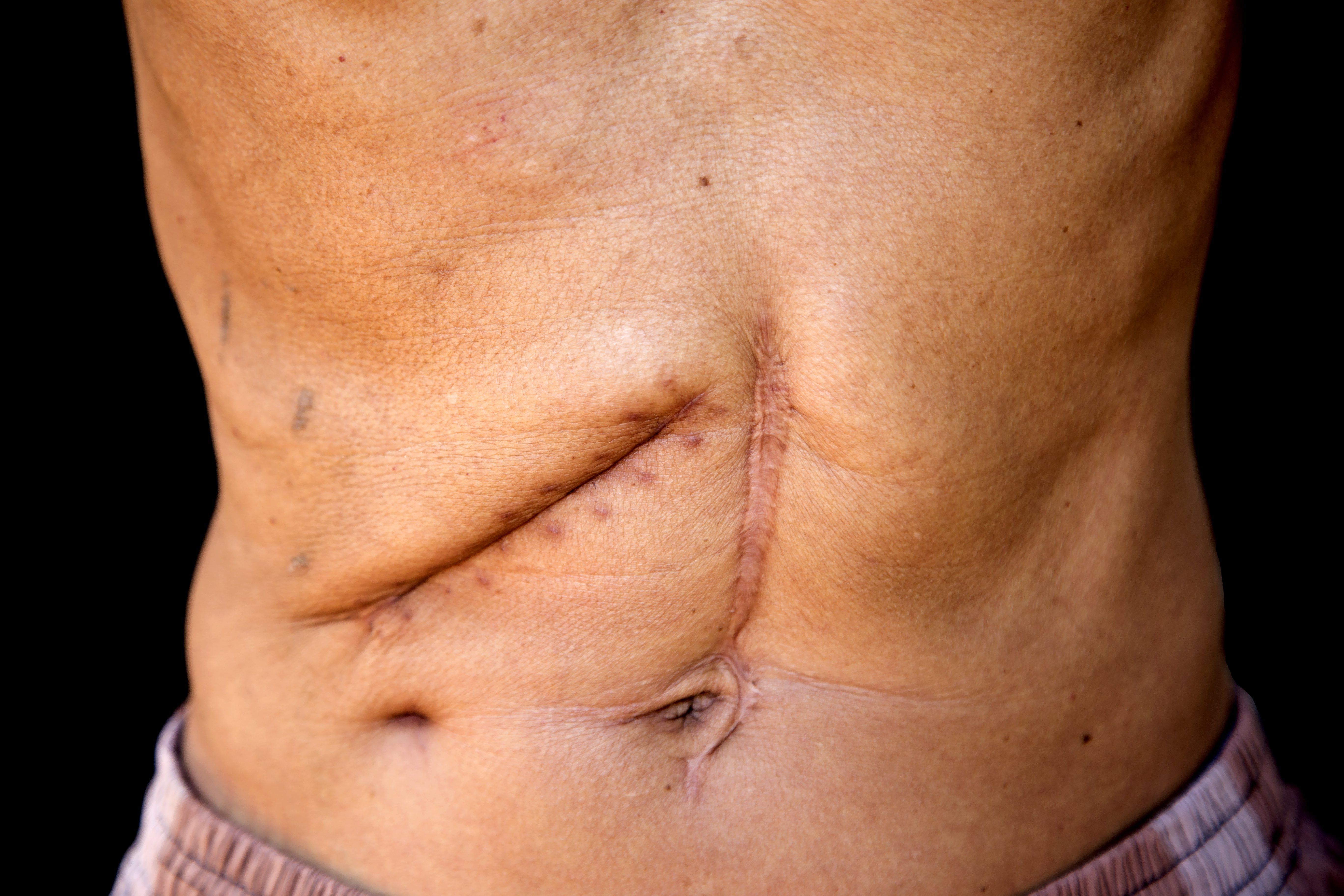- Case-Based Roundtable
- General Dermatology
- Eczema
- Chronic Hand Eczema
- Alopecia
- Aesthetics
- Vitiligo
- COVID-19
- Actinic Keratosis
- Precision Medicine and Biologics
- Rare Disease
- Wound Care
- Rosacea
- Psoriasis
- Psoriatic Arthritis
- Atopic Dermatitis
- Melasma
- NP and PA
- Skin Cancer
- Hidradenitis Suppurativa
- Drug Watch
- Pigmentary Disorders
- Acne
- Pediatric Dermatology
- Practice Management
- Prurigo Nodularis
- Buy-and-Bill
Publication
Article
Dermatology Times
Being older helps skin heal with less scarring
Author(s):
Older skin might heal more slowly, but it heals with less scarring than younger skin, according to new research.
Older skin might heal more slowly, but it heals with less scarring than younger skin, according to new research. (popetorn - stock.adobe.com)

Older skin might heal more slowly, but it heals with less scarring than younger skin.
According to new research, published in Cell Reports, the secreted compound stromal-derived factor 1 (SDF1) is present in greater amounts in younger individuals, leading to thicker scars. Older individuals have lower SDF1 levels. This finding could explain why older patients have less significant scarring from surgery or wounds, said researchers from the Perelman School of Medicine at the University of Pennsylvania, Philadelphia.
To determine what factors might influence scar formation, researchers conducted several experiments with young and old mice. They confirmed younger mice are more prone to scarring and identified SDF1 as the differentiating compound.
THE STUDY
Using 2mm ear piercings in the ears of both 1-month-old and 18-month-old mice, the team showed how these groups heal differently. The mice had the equivalent human ages of 12 years old and 70 years old, respectively. Using H&E staining, they discovered the ears of older mice healed with normal tissue, hair follicles, sebaceous glands, and subcutaneous fat. They did not scar. Conversely, the opposing cartilage end plates in younger mice remained approximately 2mm apart, and they had visible scarring.
Results were duplicated by performing full-thickness excisional wounding assays to assess dorsal back skin. Younger mice healed with fibrotic scars and exhibited higher levels of α-smooth muscle actin (αSMA), a marker of myofibroblasts that are involved in scar formation. Older mice experienced less scarring, a return of hair follicles, and lower αSMA levels. Younger mice did heal faster, reaching 85% of their full healing within two weeks. Older animals only achieved 30% during that same time.
Additionally, the researchers tested whether a circulating factor in blood played a role in scarring and tissue regeneration. By mingling the blood of young and older mice, they created a heterochronic parabiosis pair (young:old), and they compared it to isochronic control pairs (young:young and old:old). When comparing 2mm ear piercings, the isochronic pairs behaved as previously demonstrated. The old:old group’s ears healed with smaller-sized holes, cartilage regeneration, and no scarring while the young:young pair experienced scar formation. However, in the heterochronic pair, the older mice adopted the healing process seen in younger mice, healing with larger holes and scars.
As a result, researchers concluded a circulating factor found in young blood does, in fact, promote scar formation and blocks skin tissue regeneration in older mice. Based on evidence from existing literature on tissue regeneration, they opted to focus on SDF1, a gene associated with regeneration, as a possible responsible factor. They hypothesized SDF1 suppression in older mice promoted tissue regeneration. With immunohistochemistry and cell isolation experiments, they localized the majority of SDF1 expression to wound edge keratinocytes, indicating that age suppresses SDF1 secretion from injured keratinocytes.
Using a generation of mice designed to limit keratinocytes-secreted SDF1, the investigators confirmed conditionalSDF1 inactivation in keratinocytes. The modified mice experienced more healing of ear piercings, increased chondrocyteproliferation, diminished αSMA expression, and decreased scarring. In addition, serum SDF1 levels did not increase. Researchers next created a heterochronic parabiosis pair between young, modified mice and older, control-group mice, to confirm whether skin-specific SDF1 bolsters scar formation. Ear piercings in these mice closed smaller, they experienced cartilage regeneration, and decreased scar formation.
Back wounds were assessed for both modified and non-modified mice. Modified mice saw reduced scar formation, the return of more hair follicles, and reduced αSMA levels.
These findings are not isolated to mice. They can also be applied to human skin, the researchers said. Similar to mice, wounded young human skin presented higher levels of SDF1 transcript compared to older wounded human skin. By depriving the tissue of nutrients, which mimics the loss of blood supply during injury, investigators revealed SDF1 increased in young skin, but not in older skin.
In addition, they created 3-dimensional organoid constructs with young (<1 year old) and older (>71 years old) humanskin cells. Hole punch injuries, like the ear piercings, prompted SDF1 transcript and protein and downregulated the transcript of EZH2, an enzyme that silences gene function, in an age-dependent manner. They also treated these constructs with DZNep, a pharmacologic EZH2 inhibitor, and it restored SDF1 expression in older organoids. The results, they said, indicate inhibiting SDF1 or EZH2 could decrease scar formation in humans, but clinical trials would be necessary to validate those findings.
Overall, these results suggest the desire and need for tissue to heal and regenerate quickly fades over time. While controlling SDF1 expression can limit scar production, the researchers said more work is necessary to develop a better understanding of the compound’s impact on skin, as well as other organs.
“We speculate that, from an evolution perspective, a young injured animal favors fast and imperfect wound repair over slow and perfect tissue regeneration,” they wrote. “Future studies are needed to assess the relationship between skin re-epithelialization speed and scar formation.”
REFERENCE:
Nishiguchi MA, Spencer CA, Leung DH, Leung TH. Aging Suppresses Skin-Derived Circulating SDF1 to Promote Full-Thickness Tissue Regeneration. Cell Rep. 2018;24(13):3383-3392.e5. https://doi.org/10.1016/j.celrep.2018.08.054






